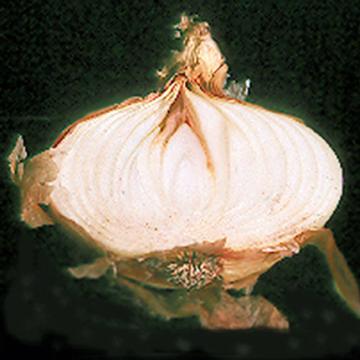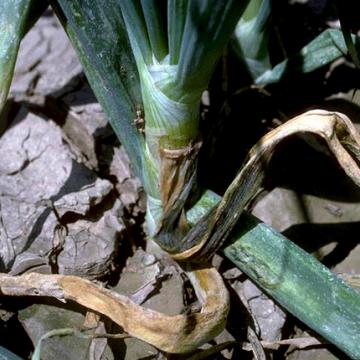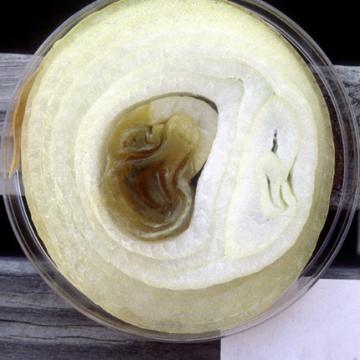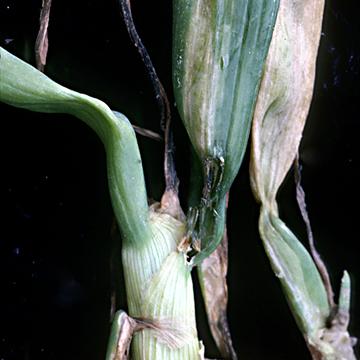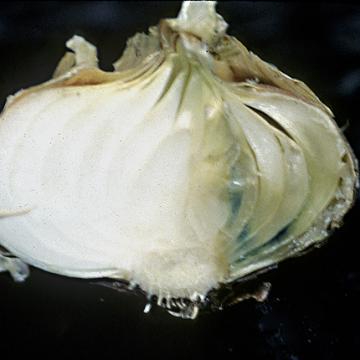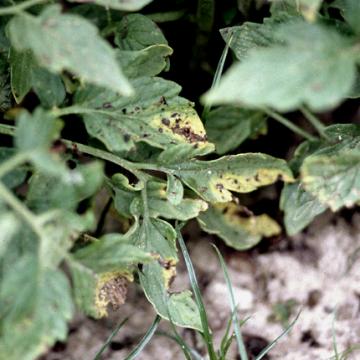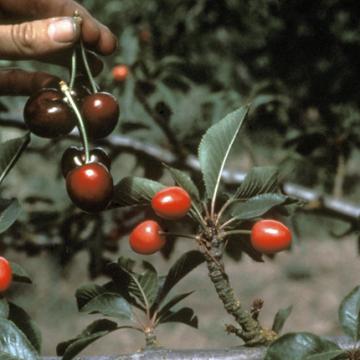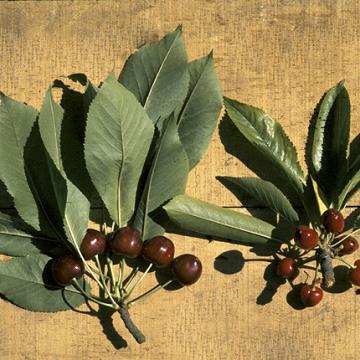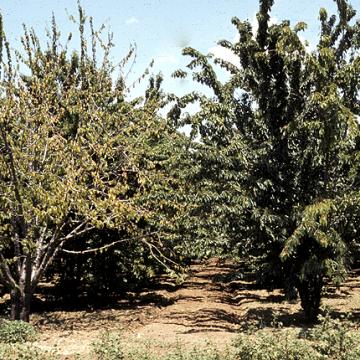DISEASE: Bacterial leaf streak and bulb rot
HOST: Onion
The disease is characterized by dark spots on wrapper scales and/or reddish brown discoloration of inner scales.
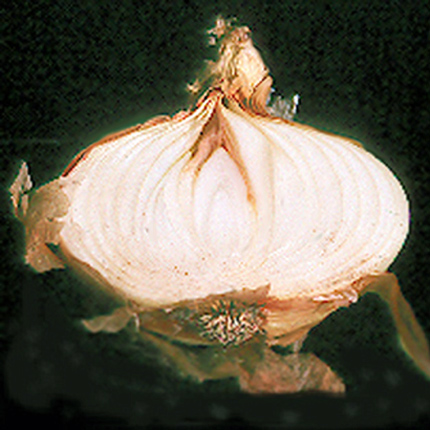
Bacterial leaf streak and bulb rot | Onion
DISEASE: Bacterial leaf streak and bulb rot
HOST: Onion (Allium cepa)
PATHOGEN: Pseudomonas viridiflava
SOURCE: R. Gitaitis
DISEASE: Bacterial leaf streak and bulb rot
HOST: Onion
Onion with dead and rotted leaf at base of stem. Typical symptoms are water-soaked, dark green lesions that become oval with time, along with streaks and tipburn.
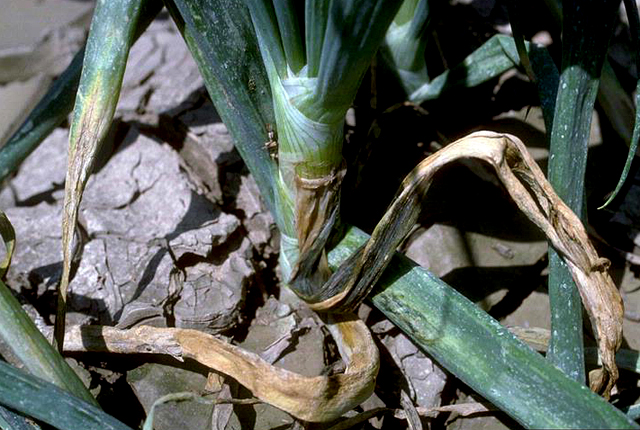
Bacterial leaf streak and bulb rot | Onion
DISEASE: Bacterial leaf streak and bulb rot
HOST: Onion (Allium cepa)
PATHOGEN: Pseudomonas viridiflava
SOURCE: H. Schwartz
DISEASE: Bacterial leaf streak and bulb rot
HOST: Onion
Browning and decay of bulb following inoculation with Pseudomonas viridiflava.
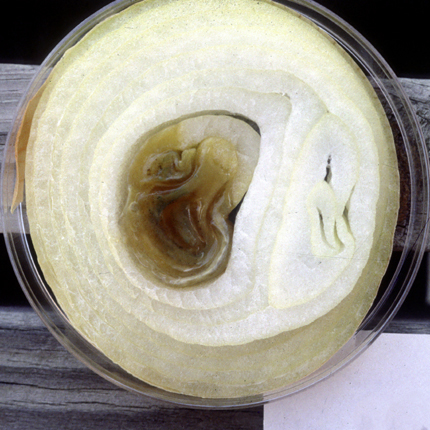
Bacterial leaf streak and bulb rot | Onion
DISEASE: Bacterial leaf streak and bulb rot
HOST: Onion (Allium cepa)
PATHOGEN: Pseudomonas viridiflava
SOURCE: R. Gitaitis
DISEASE: Bacterial leaf streak and bulb rot
HOST: Onion
Close-up of diseased leaves.
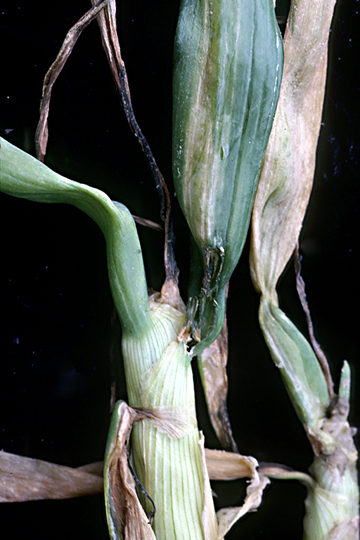
Bacterial leaf streak and bulb rot | Onion
DISEASE: Bacterial leaf streak and bulb rot
HOST: Onion (Allium cepa)
PATHOGEN: Pseudomonas viridiflava
SOURCE: R. Gitaitis
DISEASE: Bacterial leaf streak and bulb rot
HOST: Onion
Bulb rot with gray, bluish symptoms. Reddish brown discolorations also may occur.
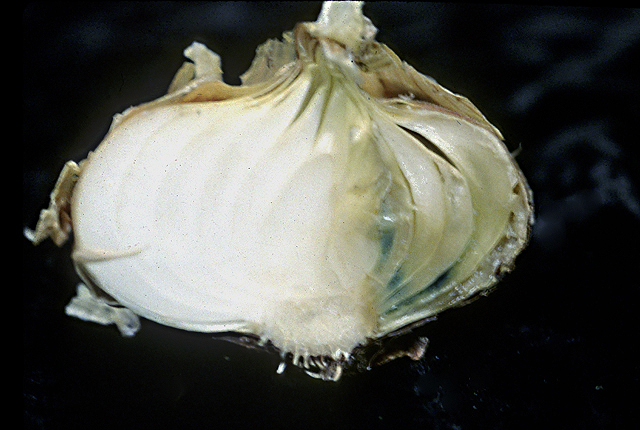
Bacterial leaf streak and bulb rot | Onion
DISEASE: Bacterial leaf streak and bulb rot
HOST: Onion (Allium cepa)
PATHOGEN: Pseudomonas viridiflava
SOURCE: R. Gitaitis
DISEASE: Syringae leaf spot
HOST: Tomato
Leaves with brown necrotic lesions and chlorotic margins. Symptoms vary greatly among cultivars. Some have black or brown lesions with bright yellow, chlorotic areas and others do not have yellowing.
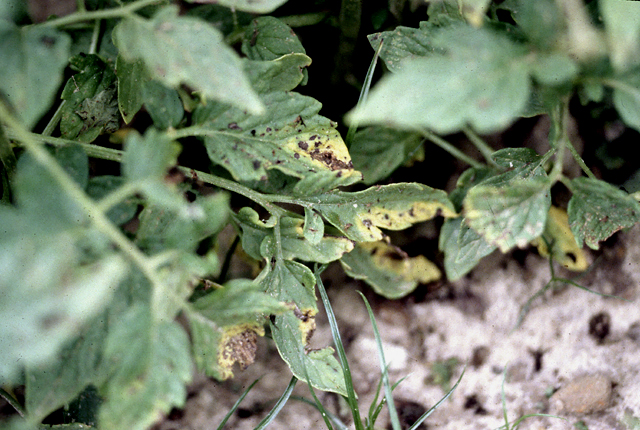
Syringae leaf spot | Tomato
DISEASE: Syringae leaf spot
HOST: Tomato (Lycopersicon esculentum)
PATHOGEN: Pseudomonas syringae pv. syringae
SOURCE: R. Gitaitis
DISEASE: X-disease (Western X) or buckskin
HOST: Cherry
Comparison of normal, dark cherries (in hand) with infected, immature cherries with less pigmentation.
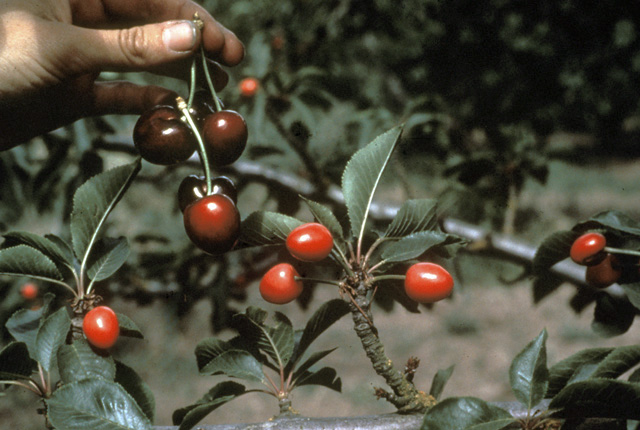
X-disease (Western X) or buckskin | Cherry
DISEASE: X-disease (Western X) or buckskin
HOST: Cherry (Prunus avium)
PATHOGEN: 'Candidatus Phytoplasma pruni'
PATHOGEN SYNONYM: Phytoplasma X-disease group
SOURCE: A. Purcell, M. Davis
DISEASE: X-disease (Western X) or buckskin
HOST: Cherry
Healthy cherry shoot (left) and stunted shoot (right).
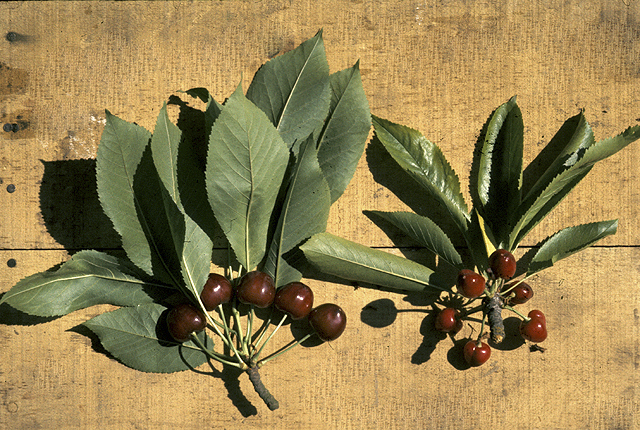
X-disease (Western X) or buckskin | Cherry
DISEASE: X-disease (Western X) or buckskin
HOST: Cherry (Prunus avium)
PATHOGEN: 'Candidatus Phytoplasma pruni'
PATHOGEN SYNONYM: Phytoplasma X-disease group
SOURCE: S. Thomson
DISEASE: X-disease (Western X) or buckskin
HOST: Cherry
Infected trees on 'Mazzard' rootstock (right) may live for years, producing fruit with symptoms. Trees on 'Mahaleb' rootstock (left) usually die rapidly in year of infection, about time of fruit ripening.
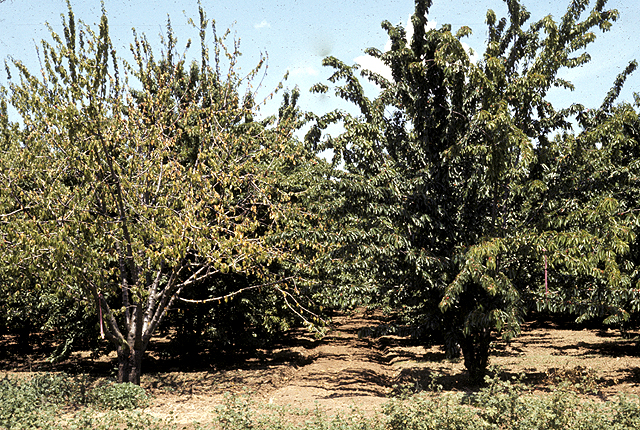
X-disease (Western X) or buckskin | Cherry
DISEASE: X-disease (Western X) or buckskin
HOST: Cherry (Prunus avium)
PATHOGEN: 'Candidatus Phytoplasma pruni'
PATHOGEN SYNONYM: Phytoplasma X-disease group
SOURCE: S. Thomson


